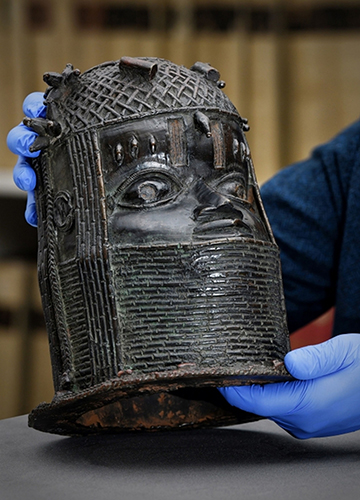It started in Aberdeen. In 2002, the University of Aberdeen in Scotland created history by returning a sacred bundle and headdress to the Kainai Nation in Canada. This was a first in many ways. The artefacts were, most likely, not looted. Yet the university chose to return those as authorities felt it represented a tradition that was alive. The items meant more to the Kainai Nation than to the university.
“We did not know a lot about how it was acquired,” said Neil Curtis, head of museums and special collections at the university. “I think someone sold it. But what really mattered was not its provenance. What mattered was its present significance, it is one of the most sacred items for the Kainai.”
This return was significant, even revolutionary, as it happened much before last year's Benin Bronzes return-moment, which changed the world. “We were not saying, 'Oh, you have got to prove that it was looted in order to get it back',” said Curtis. “[We are] saying that this matters so much more to you than it does to us. So that was a very different decision.” The university did not have the moral title, but it had the legal title. This meant it was able to make the decision to transfer the ownership of the artefacts back to Nigeria.
The most famous repatriation, however, was of the two pieces of the Benin Bronzes, looted from Nigeria. Apart from the University of Aberdeen, the only other institution that willingly gave up the Benin relics was Jesus College, Cambridge.
The loot of the Benin Bronzes symbolised one of the bloodiest aspects of the British empire. “The circumstances of the acquisition were so atrocious,” said Curtis. There are, however, very few claims for repatriation. “It is interesting how very few repatriation claims have been made,” said Curtis. People want specific objects. Also, it is not easy to make the request. The return of the artefacts, too, is not as simple as handing it over to the first person who asks. In the case of the Bronzes, “it took years to find the right people”.
Also read
- India has not done enough to bring back Koh-i-Noor: Geoffrey Robertson
- Why it is difficult for India to reclaim Koh-i-Noor
- The British duped us: Bobby Singh Bansal
- Can India bring back artefacts looted before independence?
- How a forgetful British civil servant nearly lost Koh-i-Noor
- India seeks to reclaim Koh-i-Noor, the world's most famous diamond
More than 3,000 pieces of the Benin Bronzes are with museums across the world. Like the Parthenon Marbles that have become a part of the Greek national identity—the Greeks are engaged in a legal battle with Britain over those—the Benin Bronzes have never been forgotten by its people. Nor has the story of the systematic plunder by the British forces, who arrived with chisels to loot. At a time when the Smithsonian Museum in the US has chosen to return 39 pieces, the British Museum has not even acknowledged the loot.
Meanwhile, Aberdeen University is not alone. The Glasgow City Council voted in April to return 17 treasures including seven smuggled antiquities from India and 25 Native American cultural items. This is the largest repatriation in Scottish history. “It certainly is a nicer feeling to identify with the colonised, instead of the coloniser,” said Curtis. “But we know how thoroughly embedded Scotland was with the British empire. I think motivations do matter.”


